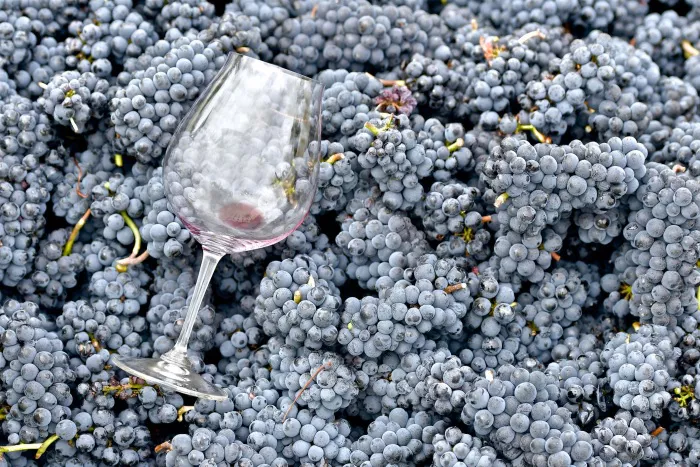Blueberry wine, a delightful and vibrant fruit wine, offers a unique way to savor the sweet and tangy essence of blueberries. Making your own homemade blueberry wine is a rewarding and creative endeavor that allows you to bottle the flavors of summer for enjoyment throughout the year. In this comprehensive guide, we’ll take you through the step-by-step process of making blueberry wine, from selecting the best blueberries to the fermentation and aging stages.
Selecting the Perfect Blueberries
The foundation of great blueberry wine is, of course, the blueberries themselves. Choosing the right blueberries is essential for a wine that bursts with flavor and aroma.
Fresh and Ripe Blueberries:
Opt for fresh, ripe blueberries that are at the peak of their flavor. Ensure they are free from mold, bruises, or signs of spoilage.
Wild or Cultivated Blueberries:
You can make blueberry wine using wild or cultivated blueberries. Both have their unique flavor profiles. Wild blueberries tend to be more intense and tart, while cultivated ones are sweeter.
Frozen Blueberries:
If fresh blueberries aren’t available, high-quality frozen blueberries can also be used. Frozen blueberries are often picked at their prime and can result in excellent wine.
Gathering Your Equipment
Before you dive into the winemaking process, you’ll need to gather the necessary equipment and supplies to ensure a smooth and successful experience.
Fermentation Vessel:
You’ll need a primary fermentation vessel, typically a food-grade plastic bucket or a glass carboy. Make sure it’s thoroughly cleaned and sanitized.
Airlock:
An airlock is essential to allow carbon dioxide to escape during fermentation while preventing oxygen and contaminants from entering the vessel.
Yeast:
Select a wine yeast suitable for fruit wines. Some popular choices include Lalvin K1-V1116 or Red Star Premier Blanc.
Sulfite Solution:
Sulfite solution (potassium metabisulfite) is used for sanitizing equipment and protecting the wine from oxidation.
Hydrometer:
A hydrometer helps measure the specific gravity of the wine, enabling you to monitor fermentation progress.
Acid Blend:
Acid blend can be added to adjust the wine’s acidity, ensuring a balanced flavor.
Pectic Enzyme:
Pectic enzyme helps break down pectin in the blueberries, aiding in clarity and flavor extraction.
Nutrients and Tannins:
Yeast nutrients and tannins can enhance fermentation and wine structure.
Racking Cane and Tubing:
A racking cane and tubing are used for siphoning wine from one vessel to another during the fermentation and aging process.
Bottles and Corks:
Make sure you have enough wine bottles and corks for bottling your blueberry wine.
Preparing the Blueberries
Once you have your equipment ready, it’s time to prepare the blueberries for winemaking.
Wash and Clean:
Thoroughly wash the blueberries and remove any stems, leaves, or debris. Use a colander or strainer for this step.
Mash or Crush:
To extract the juice from the blueberries, you can either mash them with a potato masher or crush them using a fruit crusher. Crushing the blueberries releases their juices and enhances flavor extraction.
Sulfite Solution:
After crushing the blueberries, add a sulfite solution to the fruit. This solution helps sanitize the berries and prevent oxidation.
The Winemaking Process
With the prepared blueberries and equipment in place, it’s time to embark on the winemaking journey.
Making a Must:
In your primary fermentation vessel, combine the mashed or crushed blueberries with water, sugar, and any additional ingredients like acid blend and pectic enzyme. The specific sugar and water ratio will depend on your chosen recipe and desired sweetness level.
Pitching Yeast:
Add the selected wine yeast to the must. Follow the yeast’s instructions for rehydration, if necessary. Stir gently to ensure even distribution.
Fermentation:
Seal the primary fermentation vessel with an airlock and place it in a cool, dark location. Fermentation can take several days to a couple of weeks, depending on the temperature and yeast used.
Monitor Specific Gravity:
Use a hydrometer to track the specific gravity of the fermenting wine. When the specific gravity stabilizes, fermentation is complete.
Racking:
Once fermentation finishes, rack the wine into a secondary fermentation vessel, leaving behind the sediment. This process helps clarify the wine.
Aging:
Allow the blueberry wine to age in the secondary vessel for several months to a year or more, depending on your preference and recipe. The aging process allows the flavors to develop and the wine to mellow.
Stabilization:
Before bottling, stabilize the wine by adding sulfite and sorbate to prevent renewed fermentation in the bottle.
Bottling and Aging
As the aging process comes to a close, it’s time to bottle your homemade blueberry wine.
Clean Bottles:
Ensure that your wine bottles are thoroughly cleaned and sanitized.
Siphon and Cork:
Use a racking cane and tubing to siphon the wine from the secondary vessel into the bottles. Cork the bottles securely.
Labeling:
Label your blueberry wine with the date of bottling and any specific information about the wine, such as sweetness level or varietal.
Aging in Bottles:
After bottling, let the wine age in the bottles for a few months to a year. The aging process in bottles can further improve the wine’s flavor and aroma.
Enjoying Your Homemade Blueberry Wine
Homemade blueberry wine is a labor of love that rewards patience and care. Once your wine has aged to your satisfaction, it’s time to enjoy the fruits of your winemaking labor.
Serving Temperature:
Serve your blueberry wine slightly chilled, around 55-60°F (13-16°C), to bring out its refreshing fruitiness.
Pairing:
Blueberry wine pairs well with a range of dishes, from cheeses and charcuterie to roasted poultry and fruit desserts. Its fruity and slightly tart character makes it a versatile companion to various foods.
Conclusion
Crafting homemade blueberry wine is a labor of love that requires patience and attention to detail. From selecting the finest blueberries to aging your wine to perfection, every step contributes to the final, delicious result. The reward of enjoying a glass of your very own blueberry wine, with its unique flavors and aromas, is well worth the effort.


